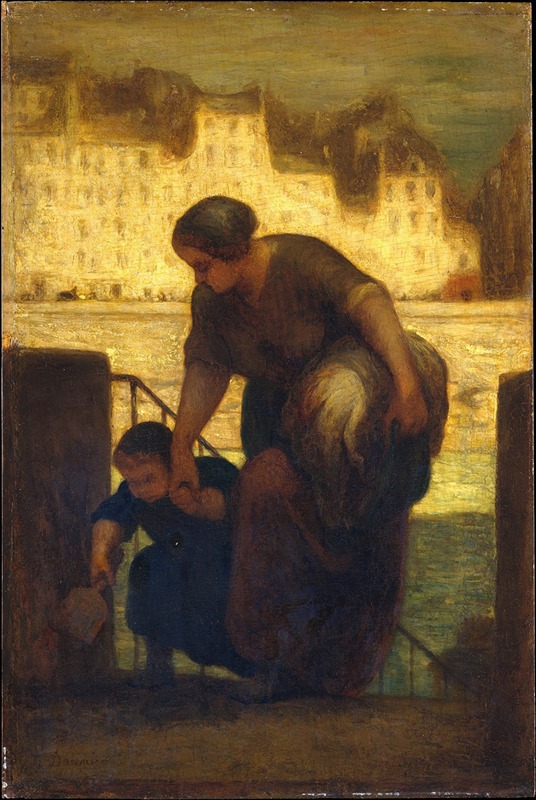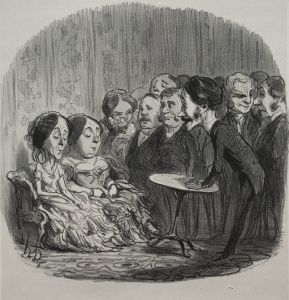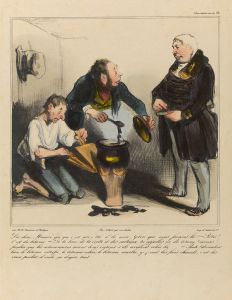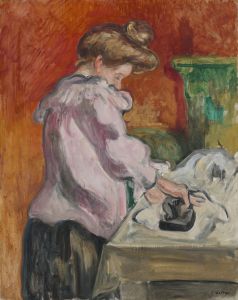
The Laundress
A hand-painted replica of Honoré Daumier’s masterpiece The Laundress, meticulously crafted by professional artists to capture the true essence of the original. Each piece is created with museum-quality canvas and rare mineral pigments, carefully painted by experienced artists with delicate brushstrokes and rich, layered colors to perfectly recreate the texture of the original artwork. Unlike machine-printed reproductions, this hand-painted version brings the painting to life, infused with the artist’s emotions and skill in every stroke. Whether for personal collection or home decoration, it instantly elevates the artistic atmosphere of any space.
"The Laundress" (French: "La Blanchisseuse") is a notable painting by the French artist Honoré Daumier, created around 1863. Daumier, primarily known for his caricatures and social commentary, also produced a significant body of work in painting and sculpture. "The Laundress" is one of his most recognized paintings, capturing the essence of working-class life in 19th-century Paris.
The painting depicts a laundress, a common figure in Parisian society at the time, as she carries a heavy basket of laundry. She is accompanied by a young child, presumably her own, who clings to her side. The laundress is shown in mid-stride, her body slightly bent under the weight of the basket, symbolizing the physical labor and hardship endured by working women of that era. The child looks up at her, adding a tender, humanizing element to the scene.
Daumier's use of color and light in "The Laundress" is notable for its subdued palette and dramatic contrasts. The background is rendered in dark, muted tones, which serves to highlight the figures in the foreground. The laundress's clothing is depicted in shades of white and gray, emphasizing the simplicity and modesty of her attire. The light falls on her face and the child's, drawing the viewer's attention to their expressions and creating a sense of intimacy and immediacy.
The composition of the painting is carefully balanced, with the figures positioned slightly off-center to create a dynamic sense of movement. Daumier's brushwork is loose and expressive, capturing the textures of the fabric and the roughness of the street. This painterly technique adds to the realism and emotional impact of the scene.
"The Laundress" is often interpreted as a social commentary on the plight of the working poor in Paris. During the 19th century, laundresses were typically women from the lower classes who worked long hours for meager wages. Daumier's sympathetic portrayal of the laundress and her child highlights the dignity and resilience of these women, despite the harsh conditions they faced.
Honoré Daumier was deeply influenced by the social and political climate of his time. He was an active participant in the artistic and intellectual circles of Paris and was known for his critical eye and satirical approach. His works often addressed issues of social justice and inequality, and "The Laundress" is a poignant example of his commitment to depicting the realities of everyday life.
Today, "The Laundress" is housed in the Musée d'Orsay in Paris, where it continues to be admired for its artistic merit and historical significance. The painting remains a powerful reminder of the struggles of the working class and the enduring human spirit. Daumier's ability to convey deep emotion and social commentary through his art has secured his place as one of the most important artists of the 19th century.

















